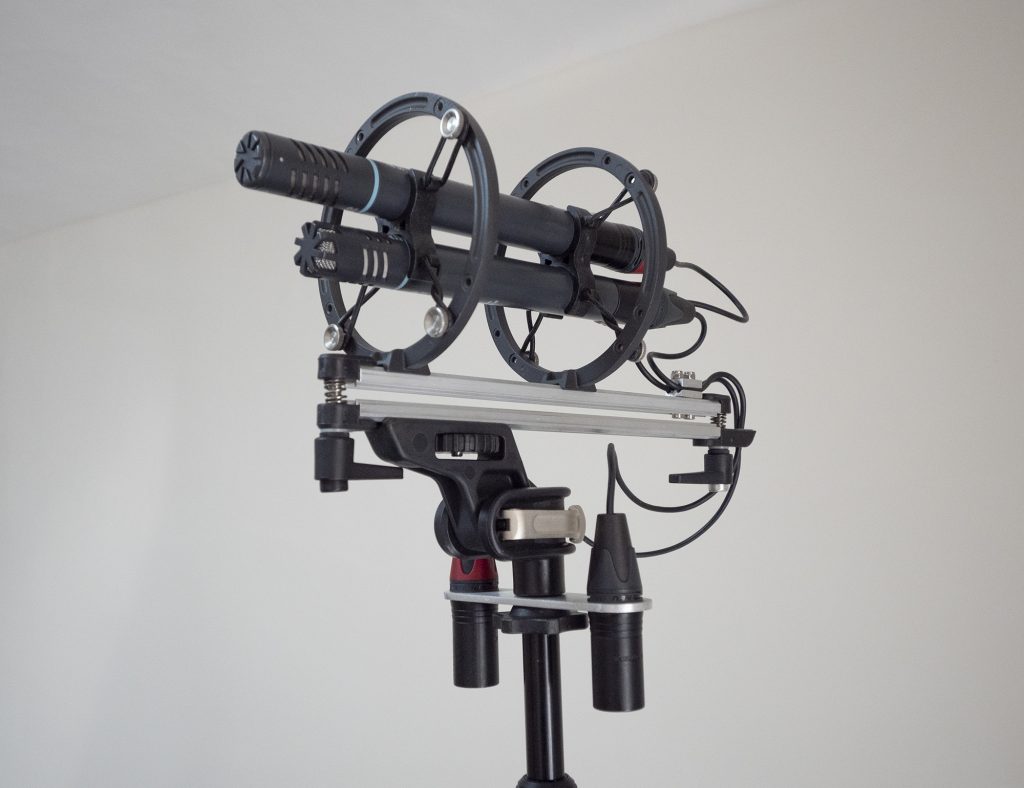
I’ve had one of the AKG Blueline mics for years. This has the CK93 capsule, which is an excellent mid-price hypercardioid SDC mic that has proved great for booming indoor (and, on occasion, outdoor) dialogue. I have also used it for music recording where I needed a narrower polar pattern than cardioid. It is leagues above my Oktava MK012 hypercardioid – so beloved by indie filmmakers – in terms of build quality, handling noise, and features (having low-cut and attenuation switches).
From time to time I’ve wondered about the other interchangeable capsules in the Blueline range and, above all, about the CK94 – the figure of eight capsule. Of course LDC multi-pattern mics include a fig 8 polar pattern and, paired with another mic, this allows mid-side recording, which I have done many a time. And, as I have posted, with a massive DIY blimp I have even got such an LDC pair outside for field recording. That said, it would be useful and, for most uses, more practical to have a compact SDC mid-side pair. The standard for field-recording pros is the Sennheiser MKH30, which, while excellent and with the advantage of humidity-beating RF technology, has the distinct disadvantage of cost: it has a street price of around £1500, and even used ones seem rare below £1000. Add another Sennheiser MKH mic (say an MKH40) and wind protection to fit and you will need to spend £3000 or more. Unlike other polar patterns, SDC fig 8s are rare, and there are few more affordable ones: ignoring the clunky pseudo fig 8s made by Oktava and Kortwich (made using two cardioids mounted back-to-back, giving a T-shaped mic), the only affordable true single -diaphragm fig 8 other than the AKG CK94 is the Ambient ATE208 Emesser. The latter, however, has a lot of bass roll-off due to it being tailored to match the off-axis response of a shotgun mic (its intended partner). Recently, boutique Taiwanese mic-maker B9Audio has produced the CM180, but it is only available direct from the maker: so this means significant shipping and duty costs need to be added to the US$749 price. Reviews are also thin on the ground to say the least.
So, with all this in mind, the AKG CK94 remains the most viable affordable SDC fig 8 for general usage (i.e. music as well as film sound). Although now out of production (AKG/Harman/Samsung appear to be phasing out the whole Blueline family and the CK94 was the first to be discontinued), at the time of writing it is just possible to find one or two new examples for sale: with the SE 300B amplifier/mic body, street price is around £600. But I’ve been keeping my eye on the used market, and was please to spot one on the Saturn Sound website (where there is a list for a grand closing down sale of mics – with some very rare examples), and – together with the SE300B amplifier/mic body – the other day I became the owner of a very good condition example: indeed, during a pre-sales check, Ashley Styles of Saturn Sound thought the capsule a bit noisy and replaced it with one he still had. All this, plus delivery in person (he has retired not so far away), for a remarkably affordable £200.
I had no concerns about the CK94 for music or louder effects recording, but, with 22dBA self-noise (a long way from the MKH30’s 13dBA) my hopes were low for recording quieter ambiences. So I was surprised how good it sounded during an initial test recording the ambient noise in the garden (in a village in rural Norfolk). You can have listen here:
I was expecting something much noisier.
In terms of rigging it up for field recording, I purchased a couple of the older style (i.e. lower profile) back-to-back clips made by Rycote (ref. no. 048460), which, unlike the new fit-any-mic clips Rycote make for MS pairs, neatly fit into a Rode Mk1 blimp and have lugs to attach to the suspension bands: the mics sit centrally and with a healthy blimp diameter of 100mm there is still plenty of air space around both mics. The CK94 has to project further forward given the location of its capsule (the centres of the two capsules should align, of course). I’ve added a DIY conn box equivalent (a clamp for the two thin cables – Sommer Cicada – that go from the mics to the DIY boompole-top XLR holder) to avoid the two heavier cables entering the blimp, so I’m there with a very nice sounding SDC mid-side rig for a very modest outlay. And, of course, I can use the AKG CK94 with mid-mics other than the hypercardioid CK93: for example, my Rode NT55 mics give me cardioid and omni mid-mic options. I’ll post other recordings – including music – with the CK94-based mid-side rig in due course.
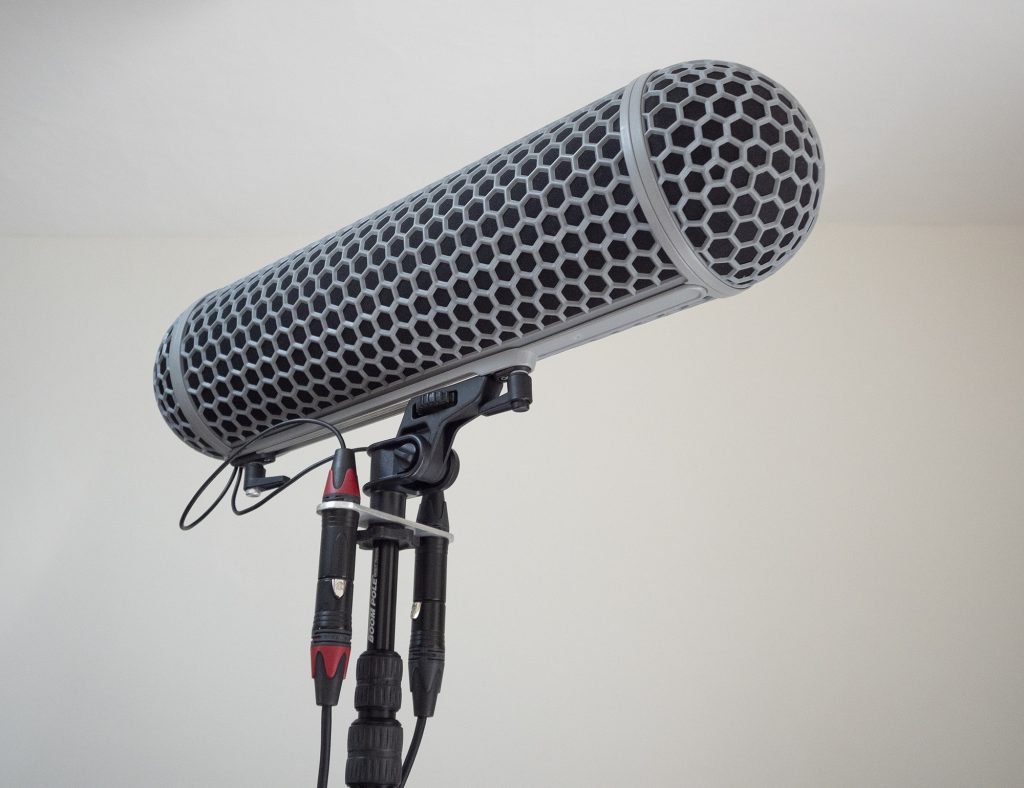
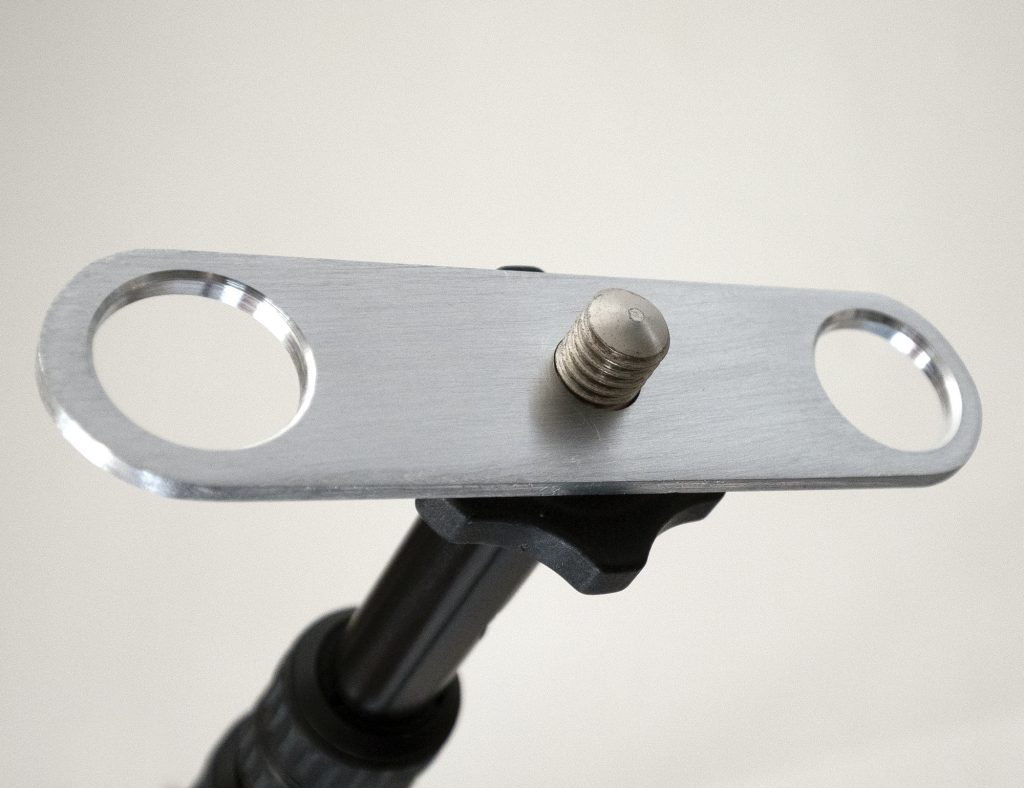

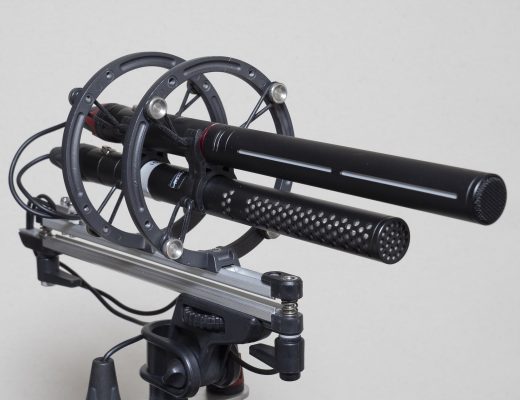
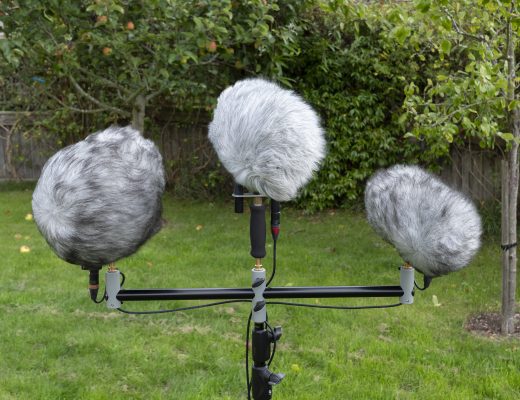

17 Comments
[…] Primo also make a single diaphragm figure 8 capsule (the EM283), again 10mm diameter, but this is not normally available via retailers. I noticed that Micboosters had started selling them and, as I had never heard of the capsule nor could find anything about it via the internet, I bought one for the princely sum of £19.68 for fun/curiosity. The specs are not as attractive as the EM172/EM272 and the 22dBA self-noise might be rather too high for many, but it is fine when used as part of a mid-side pair for louder sources such as music or some street ambiences. I found that the EM283 capsule needs better RFI screening than the EM172 and EM272, but that’s nothing unusual. I just bunged it in an old sawn-off shotgun mic tube for testing and, though this makes the mic unnecessarily large, it is fine – all hum eliminated. At some point I’ll get around to making a smaller housing with the fine mesh screening I have bought for the job. Not entirely sure if I’ll make much use of this capsule, unlike the EM172 and EM272 ones, but it has proved useful in an odd way: I had been thinking of acquiring an AKG CK94 figure 8 mic to provide the side mic for a mid-side pair with my CK93 hypercardioid, but was worried about self-noise (the CK94 is also 22dBA) and this convinced me that for my intended use I really do need something a lot quieter (so will need to save for an MKH30). UPDATE 26.5.2021: despite my conclusions about the EM283, I did buy a used AKG CK94 after all (a bargain came along) and its theoretically identical self-noise of 22dBA is not at all problematic. Lesson learned? That not all self-noise specs are equal! I’ve written a blog post about the new mic here. […]
[…] I picked up the fig 8 capsule (CK94) and another SE 300B a few months ago (see my post on it here), and have just now added the CK91 cardioid and CK92 omni capsules to the family: a good used […]
Thanks for this informative review of the CK94 and CK91 as a mid-side kit. I use the exact same setup and it´s brilliant.
I have three SE 300B´s all with a CK91 capsules + a CK92 and the CK94.
Thanks Jacob: good to hear you have and like the same set-up.
Since writing this about the CK94 and CK93 MS, as you will have seen I now have the CK92 and CK91, so good to have options. I am also currently playing with MMS (double-MS, but with two forward-facing M mics) with CK93 and CK92 for the M mics, so I can create other virtual patterns after recording).
Thanks this is indeed also very interesting!!
Any chance you could provide a picture with this setup – like you did with your MS kit?
Ahhh I see now you have already written an article about it.
Well, not quite Jacob: that photo doesn’t show the fig 8 (CK94). I will do a separate post on MMS with some samples before too long.
Thanks Roland – really appriciated.
Another question:
Can this setup be done with cardioid/omni/figure8… in other words without the hypercardioid ?
Yet another question:
How do you setup your recorder for this technique – seems you have a SD as your recorder….. In my case I have a Zoom F6.
well you could use any mid mics, but the point of my MMS (i.e. two forward-facing mid mics in a double-MS rig) is to allow creation of virtual mic polar patterns. In theory the ideal would be an omni and a fig 8: you could then generate all virtual polar patterns for the mid mic. But for a practical SDC rig this would require an end-address fig 8 (and also something pretty quiet): so I’ve found a hypercardioid the next best thing. If you used a cardioid, this would give you choices in post, of course, but only ranging from cardioid, through wide cardioid, to omni. No recorder works ideally with this: I set up a MS pair with the CK94 (fig 8) and CK93 (hypercardioid) – matrixed to the LR channels for monitoring – and record the omni on a separate channel. I’ll cover this in more detail – along with the maths of the various approaches in post – in my blog post on this fairly soon.
Cheers,
Roland
Im really looking forward Roland, thanks.
Cheers
[…] than most pairs). I’ve written previous posts about my mid-side rigs, both for LDC mics and SDC mics. Double mid-side, where the fig 8 side mic is used by two mid mics – one facing forward and […]
Hi Roland
Double M/S in post??
Mid/side is pretty easy to deal with in post but the Double mid/side is quite another story.- how do you post Double mid/side yourself?
Myself:
I´ve installed Schoeps Double MS plugin in Nuendo but so far it doesnt work.
Any feedback would be appreciate.
Thanks in advance
Hi Jacob,
The Schoeps plugin is of no use to me either for double mid-side since I am using two forward facing mics: I describe what i do in post in my blog post on this – https://drbadphil.com/variation-on-double-mid-side-recording#comments
Cheers,
Roland
I was wonderign if you could maybe provide the dimensions for the double XLR holder? Im thinking maybe someone could 3d print it 🙂
Well the dimensions simply reflect the diameter of the Neutrik XLRs, so the two holes for them are 18mm diameter. Spacing I’ve gone for is at 76mm centres, with a central hole (to allow for 3/8″ thread) of 9.5mm diameter, and overall width is 25.5mm. Thickness is 3mm, but that is with aluminium, so may need to be different in plastic. It was such an easy thing to make out of aluminium – and the result is both strong and light – and, of course, Ambient makes its single XLR holder for boom poles out of aluminium too.
Realise this is now an old post, but I’m considering buying a CK94 with an SE300 purely to use as a figure 9 mic (not M/S). It’s the nulls I’m most interested in (because I’m a singing acoustic guitarist: that’s 99% of my recording).
Would you be able to tell me what the nulls like on the CK94? How much do they reject?
I’ve heard it said that the Sennheiser figure 8 SDC provides an extraordinary level of rejection at its null points – I’m hoping that the CK94 does too. I’ve been disappointed by the level of rejection provided by multipattern LDCs in figure 8 mode – but they are not true figure of 8 patterns.
Hi Matt,
The nulls on the CK94 are good, and are consistent with the published polar pattern: according to its polar pattern, the MKH 30 has better nulls at very high frequencies (16kHz), but I’ve not had one to check. That said, I’ve found the nulls on the LDC I’ve used for singer/acoustic guitarist fine too: in that case the Rode NT2a.
Cheers,
Roland